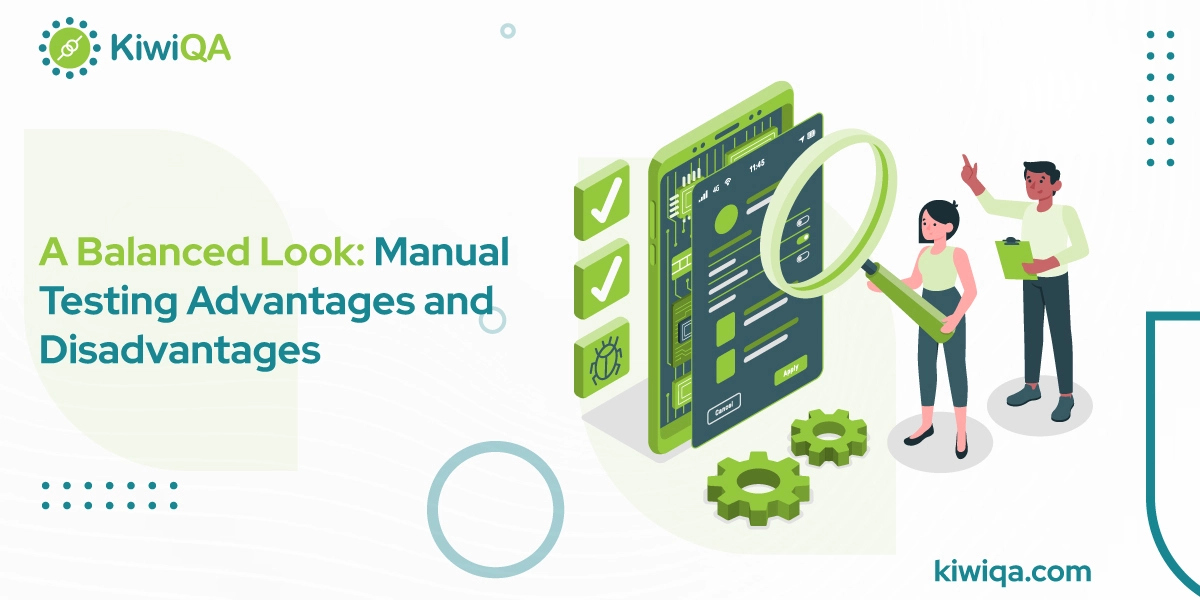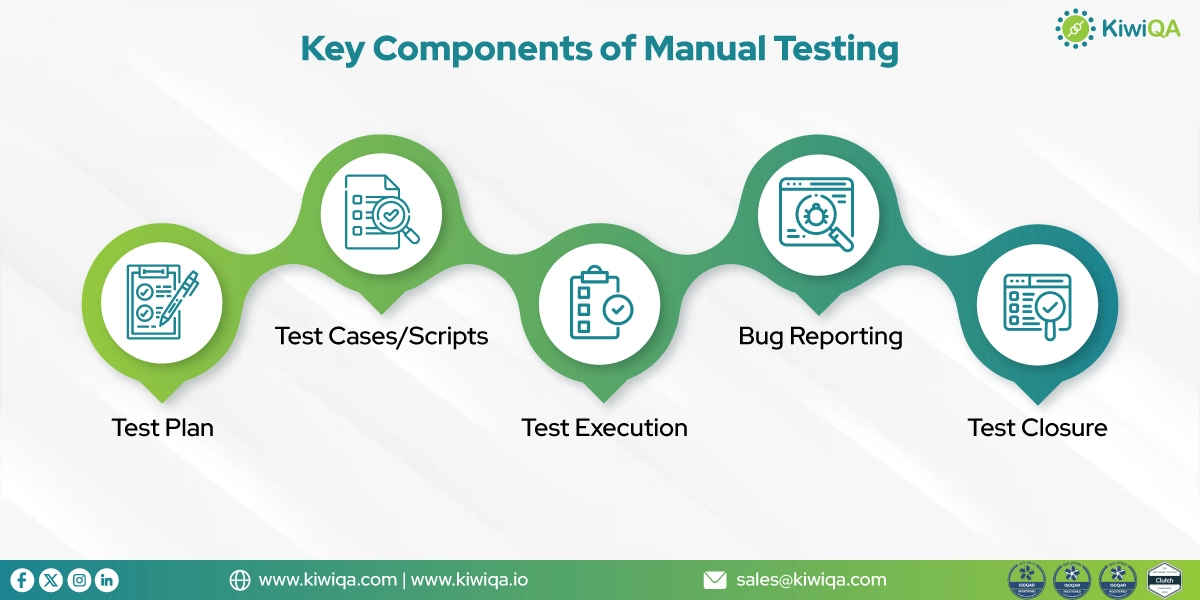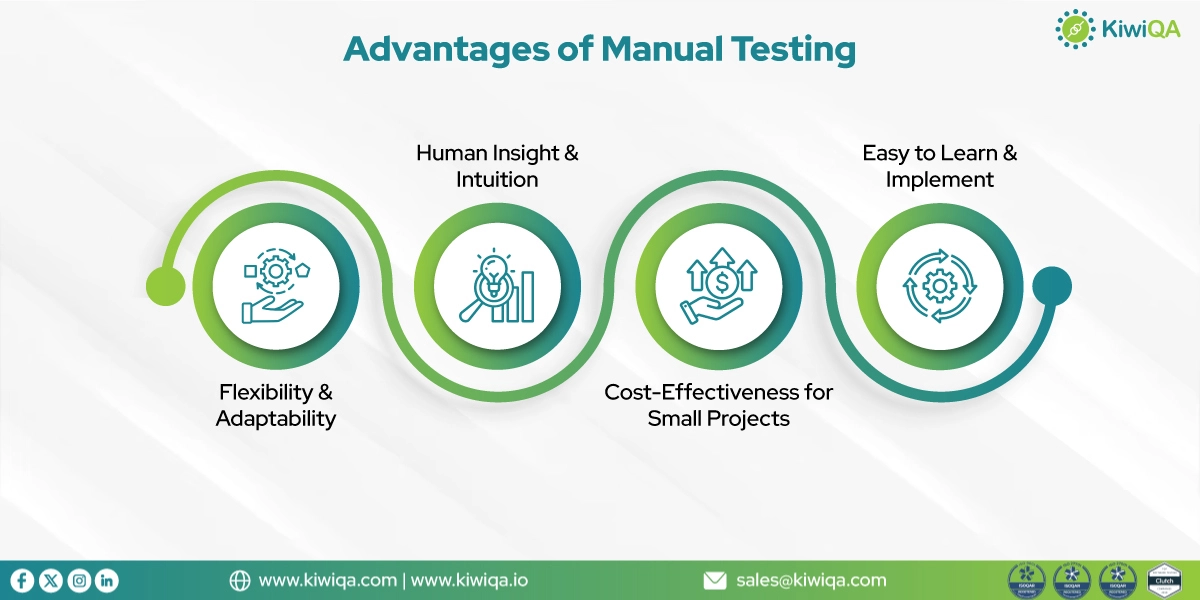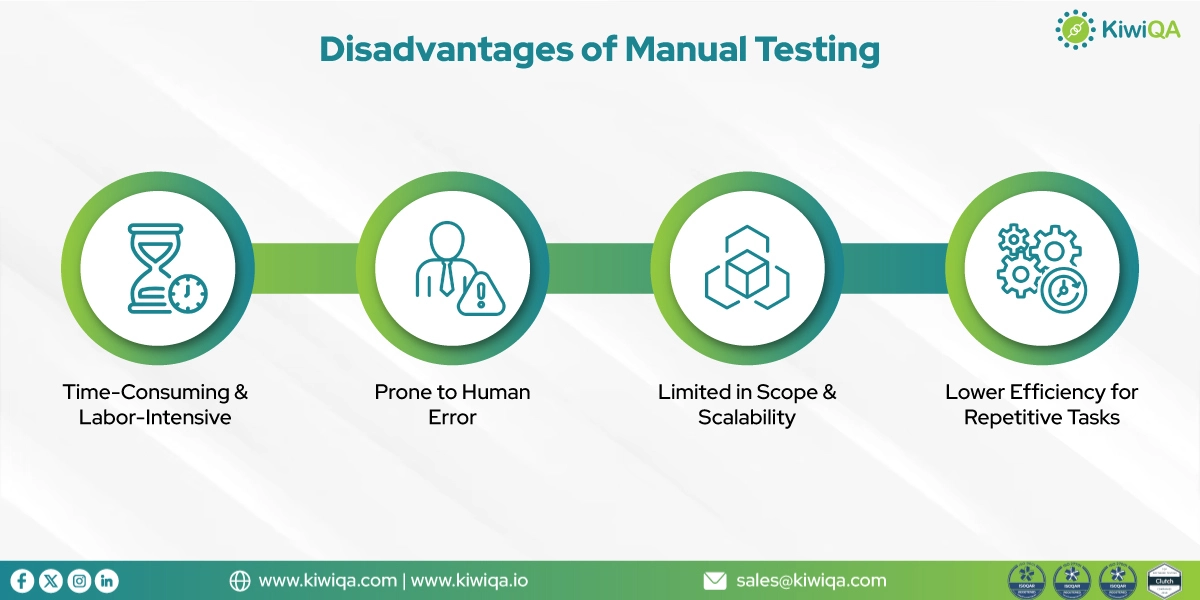Software testing is important to determine whether the application/software meets the expected needs or not. The process of testing verifies that your software is free from defects. Businesses can perform testing using manual & automated tools.
Software testing aims to find errors and gaps. When any software development procedure is being followed, you must know that errors can appear in any phase of SDLC. There are major chances that there may be some coding error in design & functionality. You can’t take your eyes off Quality assurance when developing and launching any software.
Testing software is necessary because it helps to identify the bugs earlier and fixed before they launch. Testing software products ensures security, high performance, and customer satisfaction. In the following blogs, we have detailed a guide about the necessity of manual testing & its effectiveness in the SDLC process. We also talk about what are the advantages of manual testing.
Understanding Manual Testing
Building sophisticated software systems is a process rife with mistakes. Any stage of the development life cycle is susceptible to bugs. The development teams may encounter difficulties as a result of these issues in terms of time and resource use. For smooth operation, the development team must find and address these flaws.
Finding faults, problems, and flaws in the software program is the aim of manual testing. It has lots of advantages of manual testing over automation testing.
Making sure the software is free of errors and operating by the defined functional specifications is the main idea behind manual testing. In essence, rigorous testing ensures that the system is reliable and that the consumer receives a product free of errors. Even if automated testing is becoming a trend among software professionals due to evolving developments within the industry, manual testing is still necessary for several reasons. If you want to perform this before launching your software, then look for manual software testing services from a trusted agency.
In the manual testing process, the responsibility of testers is to develop and perform test cases, perform & functionality, record faults, etc. To ensure the software/application meets the specifications, testers utilize multiple testing approaches that cover regression testing, ad hoc testing & exploratory testing, etc. Scroll to the next section to learn about the benefits of manual testing.
Software development ought to include testing as a fundamental component. While selecting types of manual testing approach, be confident about things. You should prefer manual software testing services when-
1. Exploratory testing
It is only feasible to investigate novel product attributes from various angles when using the manual testing methodology. It makes it possible to check a wider variety of pathways, which helps find errors that scripts may otherwise overlook. In situations where the test documentation is inadequate and there is limited time for execution, exploratory testing calls for the tester’s analytical abilities, inventiveness, and product expertise. We employ manual verification while doing exploratory testing since we are unable to use technologies that lack sufficient documentation and understanding.
2. Usability testing
Usability testing is another situation when manual testing is necessary. To evaluate how practical, effective, and easy to use the product has proven to be for the end consumers, we conduct usability testing. We cannot rely on instruments to do this assessment for us; instead, we need the highest level of manual intervention.
3. Adhoc testing
Adhoc testing is unscheduled testing. There is no established methodology for it. Adhoc testing is unstructured; the tester’s expertise. Therefore, manual testing is a suitable choice in these situations.
4. Short term projects
Starting to automate testing when the work is intended to be a short-term venture is not a smart idea. For a project of this kind, manual testing will be sufficient to achieve its requirements. This might result in resource waste and render the automation ineffective. Automation entails increased personnel hours, maintenance and administration expenses, and script creation and rewriting, all of which are likely to outweigh the possible return on investment for a little project.
Read Also: Difference Between Functional and Non-Functional Testing
What is Manual Testing?
Manual test cases are performed by human testers to confirm the accuracy and functioning of a software program. It is a method of manually running test cases without taking advantage of automated tools to find flaws or errors in the program. Manual testing may be done at several phases of the SDLC, which includes unit testing. It also includes integration testing, system testing, & acceptance testing. This testing is completely different from automated testing. Want to know how & manual testing advantages? Check out the below options!
Both human and automated methods have traits and cons. Automated testing saves time and resources, making it perfect for repeated, large-scale operations. However, it necessitates financial commitment, coding knowledge, and specialized labor. Modifications are also necessary for automated systems to conform to the evolving demands of applications.
However, manual testing, which is particularly useful for evaluating user experience, depends on human inventiveness and perspective. Due to human participation, it is slower and more prone to mistakes, yet it is essential for subjective judgments. Check the advantages of manual testing over automation testing.
In manual testing, test cases are based manually, whereas automation testing is done with the help of innovative testing tools.
- Automation testing is highly reliable as compared to testing done manually.
- If a business has a small budget, then it can go for manual testing; otherwise, automation testing is perfect.
- Manual testing takes more time since it is done manually, whereas automated testing takes less time because lots of tools are utilized.
- Manual testing delivers less accurate results because humans can make fewer mistakes. When businesses choose automated testing, the chances of mistakes are low.
- Manual testing is easy to access since human intervention is required. At the same time, automation testing is less reliable and difficult to access.
- When businesses go for manual testing, it is tough to test the software on different platforms, operating systems, etc. With automation testing, businesses can easily test the application on different systems.
- It is tough to execute manual testing sometimes, and it further impacts the test coverage. Automation testing delivers the best test coverage.
- In manual testing, it is tough to check the software in different browsers, but automation testing can be done easily.
- You have to sit in front of the system the whole time from manual testing because human intervention is required. In automation testing, you can run the automation scripts the whole night without sitting in front of the system.
- When performing manual testing, the testing reports have to be performed by you. When performing automation testing, you don’t need to prepare the test case execution and report because it should be done by the tool.
By following the above-discussed content, hope now you have understood the difference between manual and automated testing. To know 10 advantages of manual testing continue this blog.
Key Components of Manual Testing
When evaluating an app’s ease of use and user-friendliness, humans are crucial. Although automation tools are becoming better, human intuition still wins out. When it comes to software testing, humans are more imaginative than automated testing & can catch errors in software. Therefore, it makes sense for a human to evaluate software before it is made available to the general public if it was created with people in mind.
There are several varieties of manual testing, each tailored for certain software types and applications. The human touch is what makes manual testing so effective in producing high-quality software, even if it is a time-consuming procedure. Compared to automated testing, manual testing is easier since it doesn’t require as many technical abilities and doesn’t require you to learn or set up any tools.
So, we have mentioned a few components here.
1. Test Plan
When you have a thorough understanding of a software’s requirements, begin building test cases. It walks you through multiple phases and allows you to analyze various scenarios and functions within a software application. Effective test cases serve to guarantee that every component in the software system is thoroughly tested, as well as that real-world testing is carried out efficiently and effectively.
2. Test Cases/Scripts
Keep accurate notes on any important information you see during the testing process, such as whether it failed, passed, or was skipped.
3. Test Execution
Keeping detailed notes during the evaluation process aids in problem resolution and bug resolution. When you discover an issue while testing, document the specifics in the log. A successful bug report often contains an obvious problem title, the procedures necessary to recreate the bug, and the expected conclusion. You may also submit any other information that may assist the development team in fully understanding the issue and ensuring a successful resolution.
4. Bug Reporting
Aside from noting the particular issue you noticed during testing, keeping track of the overall results is beneficial. For example, the report contains data like-
- The total quantity of tests done
- Count of exams not completed but skipped
- The percentage of failed tests
- Percentage of successful tests
Share your findings with the software development team so that they may use them to correct any issues discovered during testing.
5. Test Closure
Re-evaluate the software program to ensure that it is free of defects and capable of achieving maximum functionality once testing is completed. The incredibly detailed test scenarios you previously created may be beneficial at this point. If the test runs successfully, you may mark the issue as addressed in the log.
Read Also: A Comprehensive Guide to Software Testing Methodologies
What Are the Advantages of Manual Testing?
To go through the advantages of manual testing, we mention some detailed options.
-
Flexibility and Adaptability
The manual technique is particularly useful for ad hoc assessment. It is adaptable enough to handle frequent modifications in the program. Human input enables easy modification of test scenarios. It is also adaptable enough to be employed in a variety of applications.
-
Human Insight and Intuition
Obtaining the end-user’s perspective is critical to the success of any program. Manual software testing focuses on how a product appears and feels and contributes essential human feedback to the testing process in addition to technical accuracy. This can assist in evaluating the application’s visual components while also identifying UI (user interface) and UX concerns.
Although automated tools are clever, they may not be as smart as humans. Only human beings with practical expertise can identify certain critical usability concerns. Manually testing the program is more likely to uncover every fault and vulnerability in software compared to other testing approaches.
-
Cost-Effectiveness for Small Projects
Manual testing is less expensive, especially for smaller projects or when the system requirements are unclear. Manual testing eliminates the need for costly tools or automated frameworks, which can dramatically cut testing expenses.
-
Easy To Learn and Implement
Manual test execution promotes thorough documenting of test scenarios, data, logging, and outcomes. Well-documented testing improves quality and repeatability. Despite the additional work, human testing still outperforms total automation for some types of structure, user interfaces, exploratory, and conjoint testing. It is a vital supplement to automated testing.
The above-discussed points define what the advantages of manual testing are. There are several drawbacks to manual testing that may complicate the software testing procedure. When establishing the testing procedure, these drawbacks must be evaluated against the 50 advantages of manual testing. In the upcoming section, we have defined a few drawbacks of manual testing that must be considered.
Disadvantages of Manual Testing
-
Time-Consuming and Labor-Intensive
Manual testing takes time since the test cases need to be conducted manually. Complicated software program testing may take considerable time. Testing teams may not have sufficient time to complete all test cases due to software development delays.
-
Prone to Human Error
Manual testing can lead to human mistakes. Testers may produce incorrect findings if they fail to test specific scenarios or make errors when performing test cases. These errors might make it hard to detect problems, lowering the quality of the software.
-
Limited in Scope and Scalability
It takes longer to document all of the human faults detected in a program, making it more difficult to follow subsequent modifications.
Manual testers must possess a thorough grasp of a product before employing it effectively. This allows people to identify errors that automated testing may ignore. Automated tests lack the need for testers to be conversant with all of its features and functionalities.
-
Lower Efficiency for Repetitive Tasks
Manual testing necessitates additional hours spent personally verifying every feature as well as the function of a program. This takes longer than conducting automated tests, which need only a small amount of time. Automated testing can even run overnight without supervision.
When To Choose Manual Testing?
-
Suitable Scenarios for Manual Testing
After covering the advantages of manual testing in software testing, let’s check when to choose this testing methodology. Testing manually is not necessarily as precise as automation, but it gives testers greater freedom in their operations. Because test automation is intrinsically effective for repeatable scenarios, the same code and scripts are frequently used.
If testers have a concept they want to get started on right immediately, using automation entails creating test cases, scripting them into the automation tool, and then executing the test, taking quite a while. Manual execution would be more efficient and faster in this scenario. Manual testing allows you to rapidly test and examine results. Automatic testing needs additional time to set up.
-
Combining Manual and Automated Testing
The sooner the team of testers can find the issue, the less time it will take to remedy it; therefore, investing in test capabilities is more worthwhile than spending on issues after they have been released. Coverage ensures that the program is tested versus all of the anticipated requirements. It also claims that with thorough testing, every approach, decision, condition, branch, and route is tried, allowing defects to be detected early on. If a defect is detected early on, the cost of fixing it is decreased.
During test coverage, the code scope is regulated, as is the standard of each application’s function, and the gaps among demands and testing instances are minimized. Because the involvement of human versus automated testing is often dictated by the application’s specifications, both approaches should be employed in tandem to cover as much code as feasible. So, this is all about manual testing advantages and disadvantages.
Boost Your QA: See How Manual Testing Shines Now!
High accuracy, adaptability, affordability, and potential benefits from knowing client demands are just a few of the many perks of manual testing advantages. Software value, ease of use, and performance are all dependent on manual testing, even if automation is becoming a significant part of modern software testing. Companies need to understand the benefits of manual testing and use it along with automated testing techniques. Ensuring the quality and stability of applications is vital in improving the SDLC process. Test coverage is the steps about how seamlessly a software system is being tested, which is essential to reaching these objectives. To improve software quality, detect and mitigate possible flaws, and foster product trust, test coverage is essential. If you want to get all the benefits of manual testing, then hire a manual testing company.










